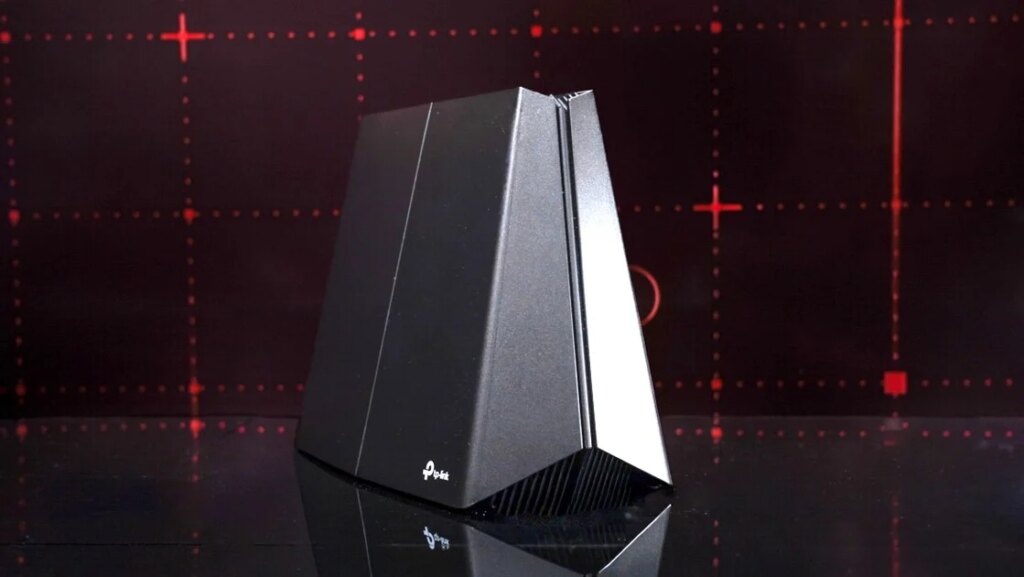You can install the GE650 using the web console or the Tether app, both of which provide an easy setup procedure. I unplugged my modem, connected it to the router’s 5G Internet port, and powered up both devices. When the router’s LED began blinking red, I opened the Tether app, tapped Add Device, and tapped Standard Routers. I scanned the QR code on the bottom of the router and waited a few seconds for the app to find the router. I tapped Set Up This Device, created a management password, and then created a network name and password for the 2.4GHz/5GHz bands, as well as one for the 6GHz band. After a minute, the new network was created, and the installation was complete.
The GE650 proved to be an excellent performer in our testing. Its score of 246Mbps on the 2.4GHz close proximity test was significantly higher than the TP-Link GE800 (195Mbps), the Asus RT-BE96U (150Mbps), and the Asus GT-BE98 Pro (148Mbps). At a distance of 30 feet, the GE650’s score of 86Mbps matched the GE800 and was faster than the RT-BE96U (83Mbps) and the GT-BE98 Pro (74Mbps).
On the 5GHz close proximity test, the GE650 scored 2,131Mbps, better than the GE800 (1,989Mbps), the RT-BE96U (1,548Mbps), and the GT-BE98 Pro (1,828Mbps). On the 5GHz 30-foot test, its score of 788Mbps beat the GE800 (736Mbps) but couldn’t keep pace with the RT-BE96U (906Mbps) or the GT-BE98 Pro (911Mbps).
The GE650’s score of 2,334Mbps on the 6GHz close proximity test was fast but still trailed the GE800 (2,337Mbps), the RT-BE96U (2,451Mbps), and the GT-BE98 Pro (3,075Mbps). At a distance of 30 feet, the GE650 managed 316Mbps, which beat the RT-BE96U (311Mbps) but not the GE800 (338Mbps). The GT-BE98 Pro beat them all with a score of 442Mbps.
To test wireless signal strength, we use Ekahau’s Sidekick 2 Wi-Fi diagnostic device and Survey mobile app to generate heat maps that show the router’s 2.4GHz, 5GHz, and 6GHz signal strength throughout our test home (Note: Ekahau is owned by Ziff Davis, PCMag’s parent company. For more, read about our ethics policy in the Editorial Mission Statement.) The white circle on the map represents the location of the router, and the colors represent signal strength. Dark greens represent the strongest signal, yellows represent a weaker signal, and grays represent a very weak or nonexistent signal.
2.4GHz coverage map (Credit: Ekahau)
5GHz coverage map (Credit: Ekahau)
6GHz coverage map (Credit: Ekahau)
As shown on the maps, the router did a great job of delivering strong 2.4GHz and 5GHz Wi-Fi to all corners of the house. However, 6GHz signals deteriorated quickly as I moved away from the router. This is expected, and likely due to the same power limitations that we’ve seen with every 6GHz router we’ve tested.
To test file transfer performance, we measure read and write speeds by moving a 1.5GB folder containing photos, video, music, and office document files back and forth between a USB 3.0 drive connected to the router and our desktop PC (also connected to the router).
The GE650’s file transfer speeds were comparable with those of other multi-band Wi-Fi 7 gaming routers we’ve tested. It scored 85MBps on both tests, while the GE800 scored 87MBps (write) and 84MBps (read), the RT-BE96U scored 82MBps (write) and 83MBps (read), and the GT-BE98 Pro scored 89MBps on both tests.

